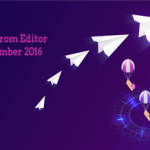On the whole, everyone wants to do a great job, have a better work environment, happy clients and customers, and to be employed by a company earning lots of money. All great goals!
But this is not always the case. When it is not, you can suggest process improvements, better tool use, different estimating techniques, etc. Suggestions are generally evaluated based upon whether they are opinions, complaints, thoughtful, useful, possible or even mean-spirited.
A large part of my work over the past few years has been consulting on process improvement for entire software teams or specific test groups helping companies and teams achieve their goals. This all sounds great but I have to say─to achieve meaningful change is often painful! My process improvement work includes team skill assessments, team practice or tool use evaluations. What do I see? Lately, it is companies saying they are Agile when they are not; development teams not taking advantage of the recent huge growth in testing tools; and the traditional favorites: bad requirements dooming a project and unreasonable schedules.
We all want to improve but change is sometimes difficult. There are ways to do process improvement well and ways to set-off turf wars. This is why we included the theme of process improvement on the editorial calendar this year. We hope to provide you with insight and experience into how and what to do to make meaningful and beneficial changes leading to happier teams and customers along with less stress, lower costs and waste reduction.
Our test process improvement issue includes my piece centered on key tips on how to get high performance out of your test teams; two articles on Agile Retrospectives from New Zealand Agile consultant 3months and Mark Levison from England, who is also this month’s Spotlight Interview; an additional related article focused on Retrospectives and Post-mortems and whether or not they are more similar than different; Blogger of the Month Rob Lambert links test process improvement to his encounter at an electronic store; Bryan Pendleton reviews How We Test at Microsoft; and the fourth part of the 2010 Global Testing Surveys series with analysis on Test Process and SDLC.
LogiGear magazine continues to be a resource for your software development projects and company needs─good luck!



















